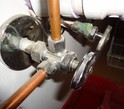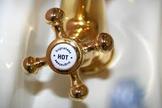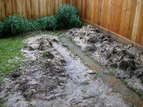|
When winter is approaching, regardless of where you reside, you must ensure that your heating system is prepared.
In the majority of Canada and the majority of the United States, furnaces continue to be the primary source of residential heating. Most of us don't turn on our furnaces until at least October, which means (if you're fortunate enough to live in a moderate climate) they've been off for over six months. Before the chilly air arrives, it is crucial to review certain furnace care guidelines. These duties ensure that your furnace is not only optimally performing, but also operational. Here are the nine most important annual furnace maintenance tasks that everyone should undertake, ideally before the heating season. 1. Clean Your Ducts, Filters, and Vents When it comes to heat transfer, enough ventilation is essential. You should clean your vents and replace your air filter at least twice a year, but during the winter, when you use your HVAC system more frequently, it is even more important. Now, if you desire clean air, you have a vast selection of air filters and air-cleaning systems from which to pick. The procedure of cleaning your ducts and vents is complex. To remove the vents, you will need your vacuum cleaner and hose (preferably a shop vac) as well as a brush, microfiber cloths, and screws. Cover your cash registers with paper towels or cleaning cloths to get started. The dust will enter your home if it is not expelled from your registers. Then, turn off the heat supply but leave the electricity on because you will use the fan to blow dust from the furnace and vents into the supply register. Turn off the fan and use your vacuum (or a brush) to clear the supply registers of junk. Obtain a long broom if you do not have a long hose attachment to reach into the piping system. Then, you can remove the air registers and clean their dust as well. From here, you may begin to access your primary ducts. Turn off the fan and the system's entire power supply. To accomplish this, you'll need a powerful vacuum cleaner (a shop vac) — your household vacuum is insufficient. This is the most complicated and messy aspect of the process, therefore you may find professional assistance advantageous. Don't forget to inspect the exhaust flue at the same time! After cleaning up, you can replace the air filter with a new, clean one. You can now clean the remaining components of your heating system. 2. Is it just me or is it chilly inside? Not all houses are made equal, and older homes can have many drafty spots. Look for drafty locations in your home and do your best to cover them up... Every ounce of heat you emit is equivalent to throwing away money. If you have damaged windows or outdated doors, it may be time to repair them. 3. Keep Your Heat Exchanger Clean The heat exchanger in your furnace is an essential component, as it warms the air that is utilized to generate heat for your home. Additionally, it must be cleaned at least once a year to remove dust and dirt and ensure efficient operation. To clean your heat exchanger, you must turn off your system and, if applicable, the gas as well. Remove any dirt or debris from the exchanger block with a brush. If necessary, remove any hardened accumulation with a moist cloth. Lastly, use a narrow vacuum attachment to thoroughly clean each chamber of the block assembly. If your system is older, professional cleaning may be beneficial. A specialist in HVAC will be able to access all relevant components and inspect for a fractured heat exchanger. Dangerous carbon monoxide leaks may result from damage to the heat exchanger of your furnace. 4. Examine the Blower Motor and Fan Your blower motor circulates air through the vents, and dust can prevent it from operating properly. In addition to cleaning the heat exchanger, you should also clean the blower motor (while the system is completely off). Remove the blower door to clean the blower. However, safety must come first; before performing any DIY furnace repair, turn off the furnace's electrical power and fuel supply. Turn off the main gas valve to shut off the gas supply. Additionally, you may need to remove the blower switch. Then, remove the fan from the cabinet using a screwdriver, taking care to protect both your fingers and the wiring. The wiring along the cabinet sides should not be compromised. Utilize the vacuum hose to clean the cabinet, and a toothbrush or paintbrush to clean the blower wheel and motor. After cleaning the blower motor, lubrication may be required. Check your owner's manual to verify if your furnace requires this step. Then, clean the bearing caps before removing the blower bearings to oil them. 5. Examine your thermostat twice Imagine hiring a heating professional and paying $150 for them to turn on your thermostat... Check your t-stat and make sure it's set correctly; it occurs more frequently than you might expect. Does your thermostat even work? Now is the time to determine. After vacuuming your furnace and replacing its components, turn it back on (and restore the gas if necessary). Turn and increase the temperature by adjusting your thermostat. A functional thermostat will activate the heat in approximately one minute. If you do not hear the furnace turning on, there may be a problem with the thermostat. Remove the lid and then inspect the connections. The wiring connections must be complete. Check YouTube or Google if you do not know how to complete this task. (You can also hire a professional or an electrician to accomplish this if you're not comfortable doing it yourself.) If the cables appear to be in good condition, double-check that the power source was turned on after cleaning. If the problem persists, a professional HVAC technician is required. The offending component could be your blower, heat pump, or furnace fan, among others. Also possible is a malfunctioning thermostat. An expert can test each component and identify the culprit. 6. Batteries! Incessantly beeping carbon monoxide and smoke alarms have a purpose; their batteries are expiring and they want you to replace them. Therefore, remove your wallet and replace the batteries to safeguard yourself, your home, and your family. 7. Why does my furnace have an odor? When you initially turn on your heating system, you may detect a faint fragrance of burning... If the odor persists, take the appropriate safety precautions. Your furnace room should not include any paints or chemicals. Even if you cannot detect their odor, their gases might damage the heat exchanger in your furnace. This can result in both costly repairs and carbon monoxide poisoning. Maintain a clean, clutter-free furnace room. Similar odors may emanate from your furnace and air conditioning system. This may provide a clue as to what is wrong if something smells off. 8. Preseason Examinations Even the most skilled do-it-yourselfers might benefit from an annual tune-up and thorough drain cleaning. Why? Because virtually all HVAC manufacturers need it as a warranty requirement. In the event that your furnace breaks down in the middle of winter, neglecting your annual inspection can be disastrous. If you want to ensure that your furnace will operate safely and dependably throughout the winter, you should hire a local HVAC service firm to complete preseason inspection and maintenance. Therefore, plan an inspection before it becomes too chilly. If you engage them under an annual furnace maintenance agreement, you'll receive a discount on pre-season inspections, and most businesses offer subsidized premium service in the event of an unscheduled breakdown. Quick Tip: Inform your HVAC Technician. Be cautious to document any problems you have with your furnace, heating system, or air conditioner. Keep all receipts from past HVAC professional visits and place them close to your furnace... By informing the present service technician of past problems, it could save you hundreds of dollars on future repairs. 9. Does my furnace appear to be older than I am? If your heating system seems like it could garner a high price on Antiques Roadshow, it may be time to seek estimates for a new furnace. Obtain at least three bids; they will all be comparable, but it will give you confidence that you're receiving a reasonable price. Final Furnace Maintenance Tips Are you prepared for the upcoming chilly months? Before the first cold snap, every homeowner should take some precautions. You should test your thermostat, turn on your furnace at least once, and replace your filter for the season. If your furnace won't start, you may have more serious issues. However, these are the very minimum maintenance tasks. Furnace maintenance, such as cleaning the blower, ducts, and burners, prevents furnace disasters from jeopardizing your safety and money account when winter arrives. In addition, it safeguards your warranty if your HVAC system is relatively new. Don't wait to implement these suggestions. When the weather begins to change, all the procrastinators decide to call the local HVAC service provider at the same time. Are you prepared to book a winter furnace inspection? Contact Elizabeth Drain Service when you need a competent HVAC technician to assist with the comfort of your home. Get the proper professional counsel the first time and make the most of your resources. If you enjoyed this article, please share it with others. Check out our post on when to call a service technician for more information. Best wishes and enjoy a warm and cozy winter!
0 Comments
Leave a Reply. |
Archives
March 2024
Categories
All
|
- Plumbers / Drain Service
-
Plumbing Services
- Boiler Repair - Replace
- Clogged Drains and Sewer Lines
- Faucet Replacement
- Elizabeth Furnace Installation & Replacement
- Furnace Service & Maintenance
- General Plumbing Repairs
- Heat Pump Service & Maintenance
- Hot Water Heater Repair Replace
- Humidity Control & Dehumidification
- New Supply and Drain Lines
- Toilet and Vanity Replacement
- About Us
- Privacy Policy
- Contact Us
-
Areas We Service
- Plumber Bayonne
- Plumber Belleville
- Plumber Carlstadt
- Plumber Edgewater
- Plumber Hoboken
- Plumber Jersey City
- Plumber Kearny
- Plumber Lodi
- Plumber Lyndhurst
- Plumber Newark
- Plumber North Arlington
- Plumber North Bergen
- Plumber Palisades Park
- Plumber Ridgefield Park
- Plumber Rutherford
- Plumber Secaucus
- Plumber Teaneck
- Plumber Union City
- Plumber West New York
- Plumber Weehawken
- Blog
|
Elizabeth Plumbers and Drain Service

162 Elmora Ave. #323
Elizabeth, NJ 07202 elizabethdrainservice@gmail.com www.elizabethdrainservice.com (908) 988-0365 |
Elizabeth Drain Service is a full service and licensed plumbing contractor that specializes in drain clearing and sewer backups and repairs. Call us today if you have any plumbing needs.
|

 RSS Feed
RSS Feed



